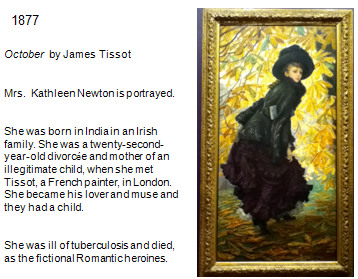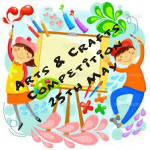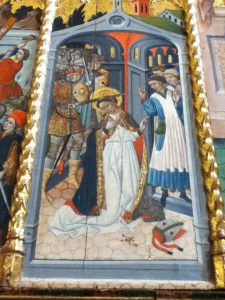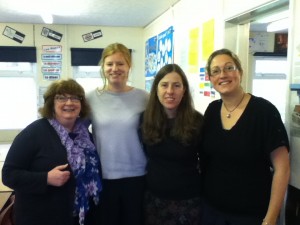Social Sciences
now browsing by category
Posted by: aragonbilingue | on agosto 21, 2017
Medieval Death
The University of Cambridge offers Medieval Studies among its International Summer Programmes. In August 2017, it included two courses about The Black Death and Medieval Death and Dying that I attended thanks to the Erasmus+ project of my school. Although probably not every one agrees, these topics can be interesting not only for scholars, but also for secondary students. In a time when walking dead and forensic research are increasingly present in the entertainment and popular culture, some school activities could be developed from those topics. Let’s see some possible sources to study medieval death.
The following text is extracted from Life and miracles of Saint Modwenna written in Latin by Geoffrey of Burton in the 12th century:
«[…] That very same day on which they were interred they appeared at evening, while the sun was still up, at Drakelow, carrying on their shoulders the wooden coffins in which they had been buried. The whole following night they walked through the paths and fields of the village, now in the shape of men carrying wooden coffins on their shoulders, now in the likeness of bears or dogs or other animals. They spoke to the other peasants […]»
This photo pictures a medieval shrine showing holes for touching the relics presumably of Saint Osmund, who died in 1099, and it is kept at Salisbury Cathedral.
This article about the Black Death explains the huge impact of the plague on the medieval European people. This summary is a good introduction to know more about the Black Death in the past and in recent times. This presentation is useful for visual learners and updates the information available about the Black Death from the last research.
This archeological research can be the base for a forensic case study on medieval bones.
Posted in 2 ESO, C. - SECUNDARIA, Literacy, Noticias, Social Sciences, Teacher training | No Comments »
Tags: Erasmus+, History, Teacher training
Posted by: aragonbilingue | on enero 11, 2017
Thomas Becket’s story in Anento (Zaragoza)
If you are teaching the MECD-British Council integrated curriculum, you know how interesting can be using elements to make a strong British-Spanish connection for your students. Some are well known, like the story of Henry VIII and Catherine of Aragon, but some are not. The altarpiece of the small village of Anento in Zaragoza province, Aragon, has one of these less known connections. It is a gothic masterpiece painted by Blasco de Grañén in the 15th century which shows three stories about our Lady of Mercy, Saint Blaise and Saint Thomas Becket. Yes, Thomas Becket, the saint of Canterbury appears here and this is because his murder was a prefiguration of the problems the archbishops of Zaragoza faced at the beginning of the 15th century, a time of political instability in the Crown of Aragon. If you want to know more about this beautiful altarpiece, you can read this book, in Spanish, M.C. Lacarra, Retablo de San Blas, de la Virgen de la Misericordia y de Santo Tomás Becket de la iglesia parroquial de Anento (Zaragoza).
Posted in 2 ESO, C. - SECUNDARIA, Cross-Curricular | No Comments »
Tags: Art, History
Posted by: aragonbilingue | on julio 13, 2016
Discoveries, explorers and rulers of the sea at Naveluna
A small project about the discoveries and explorers of the Early Modern Era in Social Science. The pupils could choose their task: a storyboard, a fictional diary or an oral description of a painting.
There is a presentation that summarises the work of the students. You can download it in the following link: Students work Sociales Naveluna 2
This project was part of an interdisciplinary one built around Mathematics and Astronomy, called Naveluna, at IES Pedro de Luna, Zaragoza.
Posted in 2 ESO, Cross-Curricular, Social Sciences | No Comments »
Tags: History, Projects
Posted by: aragonbilingue | on abril 3, 2016
New BC/MECD curriculum for language and literacy

Here is a direct link to the recently published pdf «Spanish English primary integrated curriculum. Language and Literacy«
Here are the infants and secondary curriculum documents:
Infants
>>>Currículo integrado hispano-británico para educación infantil y orientaciones para su desarrollo<<<<
Secondary
>>>>Integrated Curriculum for Secondary Education English – Years 1 and 2<<<<
CLIL subjects
>>>Integrated Curriculum for Secondary Education Natural Science, Years 1 and 2<<<<
>>>Integrated Curriculum for Secondary Education. Social Sciences, Years 1 and 2<<<<
>>>>Pedagogical Guidelines Primary: Science, Geography, History<<<<
Posted in 1 ESO, 1 ESO, 1 ESO, 1º / 2º, 2 ESO, 2 ESO, 2 ESO, 3º / 4º, 5º / 6º, A. - INFANTIL, B. - PRIMARIA, Literacy, Natural Sciences, Social Sciences | No Comments »
Posted by: aragonbilingue | on diciembre 17, 2015
Famous migrants
This is an activity that was already uploaded to this website, but it was not available anymore due to some problems the website experienced. So, we have it here again. It is a non typical approach to migration that can be used for Geography or English lessons.
Here, you can get the powerpoint:
FAMOUS-MIGRANTS Aragonbilingue version
Here, you can get the worksheets:
Posted by: aragonbilingue | on octubre 29, 2015
Estancia profesional en el Reino Unido
Entre el 4 y el 17 de octubre de 2015, la profesora Elvira García Arnal, del IES Pedro de Luna de Zaragoza, ha realizado una estancia profesional de dos semanas en la Fairfield High School, de Peterchurch, Hereford, Reino Unido, dentro del programa de estancias profesionales del MECD.
La estancia ha sido una experiencia grata que ha permitido a los alumnos de español de Fairfield un contacto más directo con la lengua que estudian y a la profesora española observar la metodología con la que trabajan los profesores de Geografía y de Historia en un centro inglés, aspecto primordial dentro de la enseñanza bilingüe de currículo integrado (MEC-British Council). Agradecemos de nuevo la colaboración y amabilidad de la comunidad educativa de la Fairfield High School y especialmente del profesorado de MFL y Humanities para que esta estancia haya sido posible.
A continuación hay varios enlaces a materiales elaborados tras esta estancia profesional:
Peterchurch UK for Aragonbilingue
Poppies in the UK after professional stay
Juan de Lanuza patriot or rebel
Philip II prudent king or evil ruler
También se puede ver una presentación en inglés sobre esta estancia en el siguiente enlace:
Professional stay at Fairfield
Y la colaboración en el blog de Estancias profesionales de Educalab (MECD):
Entradilla en el blog de Estancias Profesionales
Posted in 2 ESO, 3 ESO, 4 ESO, C. - SECUNDARIA, Cross-Curricular, Social Sciences, Teacher training | No Comments »
Tags: Estancias, Geography, History, Settlements
Posted by: aragonbilingue | on octubre 21, 2015
Science On Stage

Website Science on Stage Europe
Dear teachers,
Science on Stage Europe has turned old into new: From now on you will find www.science-on-stage.eu in a completely revised design. The new homepage offers many advantages:
- Interactive Map
Browse all Science on Stage countries - Calendar
Find activities and contacts in your country - Activities
Keep up with all our activities and festivals in Europe - Blog
Find interesting news, hints and interviews - Mobile Version
Browse the website on your Smartphone or Tablet
Any feedback is welcome as a comment in their Blog or via e-mail to info@science-on-stage.eu.
Posted in Natural Sciences, Social Sciences | No Comments »
Posted by: aragonbilingue | on octubre 21, 2015
Women of the last centuries
If you are a Social Science teacher, maybe you want to introduce the study of the last three centurias of History focusing on the people. Then, you can use this powerpoint presentation that includes the portraits of four different women.

Find the presentation here: Women of the Contemporary Era for Aragonbilingue
Posted in 4 ESO, C. - SECUNDARIA, Cross-Curricular, Social Sciences | No Comments »
Tags: Art, History
Posted by: aragonbilingue | on abril 2, 2014
Visit to London (Ejemplo de Buenas Prácticas)
Tourism in London es una propuesta para realizar una ruta turística por la ciudad de Londres, en este recorrido se han seleccionado los monumentos y lugares que cualquier turista o visitante que vaya a la ciudad de Londres no debería dejar de ver.
- Idea: elaborar una ruta turística online de la ciudad de Londres destacando los principales monumentos y lugares de interés.
- Distribución del trabajo: cada alumno se ocupó de documentar y preparar la redacción y presentación de un monumento o lugar de interés de Londres.
- Búsqueda de información y elaboración de materiales.
- La documentación gráfica, o imágenes, de cada lugar se obtuvieron de Google maps con el complemento instalado de Google Earth para ver mapas en 3D.
- La documentación escrita, o descripción, debía tener un contenido breve y añadir un enlace web para que el usuario que lo desease pudiese ampliar la información, y preferentemente, este enlace debía ser a la página oficial del sitio descrito.
- El audio de la descripición sería grabado y editado con el programa Audacity. Para simular una audioguía de Londres, en la edición de cada una de las grabaciones de los alumnos se añadieron unos timbres de inicio y de final.
- El diseño de la ruta, o recorrido, se trazó sobre un plano turístico de Londres.
- Presentación: una vez diseñado el circuito, se pasó a plasmarlo en formato digital, para ello se utilizó una herramienta online que permite crear presentaciones interactivas, “Prezi.com”. Los alumnos tuvieron que registrarse y darse de alta en este servicio para poder trabajar de manera compartida en esta presentación: “Tourism in London”
- La base de la presentación es una imagen del plano turístico de Londres.
- Las diapositivas: son marcos de presentación en los que se encuadraron las imágenes y textos correspondientes a cada elemento. Estos marcos se fueron superponiendo y distribuyendo sobre la imagen del plano turístico, ocupando el lugar en el realmente se localiza cada monumento.
- El audio se insertó como locución que se activa cada vez que la presentación pasa por este punto de la ruta
- El recorrido o ruta se diseñó secuenciando los marcos o diapositivas. El orden, tamaño, posición y orientación con el que se crearon estas diapositivas es lo que determina los posteriores efectos de movimiento y zoom con que se visualiza la presentación.
El trabajo final daría este resultado:
¡Bienvenidos a Londres!
Los alumnos de 2ºC de ESO os presentamos este itinerario.
¡Mira lo que te espera en la maravillosa ciudad de Londres!
Hemos seleccionado los 13 lugares más importantes entre los muchos que puedes visitar.
Si planificas una visita a Londres, puedes seguir esta ruta.
Welcome to London!
Come and see all that awaits you in the great city of London!
Here are our top 13 favourite places to go to in London
Planning your London visit, view our itinerary
Enlace a la actividad en prezi.com: http://prezi.com/o40la_ca08r0/turismo-en-londres/?kw=view-o40la_ca08r0&rc=ref-35161577
Posted by: aragonbilingue | on febrero 20, 2014
DOCUMENTACIÓN PROGRAMA CURRICULUM INTEGRADO: MEC/BRITISH COUNCIL
Infants
Primary
Secondary
Posted in 1 ESO, 1 ESO, 1 ESO, 2 ESO, 2 ESO, 2 ESO, A. - INFANTIL, B. - PRIMARIA, C. - SECUNDARIA, Literacy, Natural Sciences, Social Sciences, Teacher training | No Comments »











 D5 Creation
D5 Creation